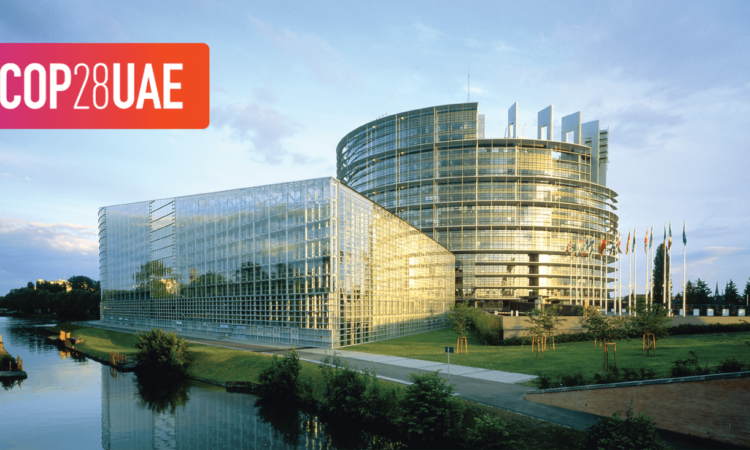
This article is part of our COP28 series. Learn more about CATF at COP28.
COP28 comes at a pivotal moment for European climate action. Not only are we reaching the conclusion of a monumental era of climate action in Europe – Commission President von der Leyen’s term in office has been defined by an unparalleled experiment in climate policy and regulation – but also a moment of shifting personnel at the top and Europe-wide elections around the corner. Within the EU, national and regional politics have become dominated by discussions of energy costs, climate action and economic planning.
COP28 in Dubai, therefore, is a welcome opportunity to take stock, recalibrate and fortify Europe’s approach to the energy transition.
The past four years have seen dozens of notable European climate policies touching every major sector. Amongst those, there are innovations in policy such as the world’s first Carbon Border Adjustment Mechanism (CBAM) and the proposed regulation on methane imports — both global milestones in the pursuit of deep decarbonisation. COP is the right forum to showcase such breakthroughs and, more importantly, to broker the long-term, international partnerships needed to actually deliver them.
But it is worth underscoring that Europe is still off track to meeting its climate targets. Brussels cannot rest on its laurels. Von der Leyen acknowledged this in her State of the European Union speech in October when she re-affirmed that the European Green Deal was only just getting started: “When it comes to the European Green Deal, we stay the course. We stay ambitious. We stick to our growth strategy.”
Europe, long regarded as a climate pioneer, is grappling with an upended geopolitical and macroeconomic landscape. Policymakers now recognise that climate policy cannot exist in isolation; it must be paired with plans for economic prosperity and energy security, and European policy must reckon with global trends in order to chart a stable course into the 2030s and 2040s. The strategy for achieving 2050 climate neutrality must be resilient against external shocks, from energy insecurities and scarcity of resources to over-reliance on external manufacturing, coupled with domestic challenges like rampant short-termism, an aging workforce, high electricity costs, and uncertain economic prospects.
COP28 serves as a potent reminder that Europe’s decarbonization efforts must transcend borders. Alone, Europe cannot combat global warming. The interconnectedness with multiple markets post-decoupling from Russia underlines Europe’s significance as the world’s biggest energy importer. Additionally, Europe’s pioneering role in clean technology demands global adoption to meet climate targets. Acknowledging the world’s increasing energy demands by 2050, long-term European strategies must align with this reality.
Moreover, Europe’s proficiency in climate diplomacy and its role as a ‘global regulator’ can smooth the transition to a new clean energy system. The formulation of inclusive universal standards should be a method to streamline the mammoth task of coordinating a global shift to clean energy infrastructure.
The last couple of years have been tumultuous for Europe, characterized by significant energy and climate disruptions, prompting a re-evaluation of conventional approaches. That has meant previously verboten technology options like carbon capture and storage are finally gaining traction, nuclear energy is re-entering discussions, and hydrogen’s role is under re-examination. Hopefully, this marks the beginning of European policymakers’ embrace of an options-based strategy that values rapid decarbonisation over perceived ideological purity.
For the rest of the world, Europe offers some pivotal lessons. The EU’s rollercoaster ride of ambitious policymaking juxtaposed with disruptive energy upheavals serves as an example for other regions aspiring toward climate neutrality. Even in what appears a well-structured plan, the necessity for uncertainty and flexibility within transition plans is evident to create truly robust strategies.
As we navigate a tumultuous geopolitical realm that one might describe as a “permacrisis,” it’s evident that Europe’s path to climate neutrality demands planning, adaptability and resilience. This recalibration requires a forward-thinking strategy that not only addresses the immediate challenges but anticipates and mitigates future uncertainties. The future demands a cohesive global approach that transcends geographical boundaries, aligns with escalating energy demands, and navigates through the dynamic macroeconomic landscape.
The conclusion of COP28 must mark not just the achievement of milestones but the inception of a robust, adaptable strategy for a climate-neutral Europe in an ever-evolving global landscape. The time for global collaboration, adaptive strategies, and innovative solutions is now, and Europe stands at the precipice — ready to lead this charge.









